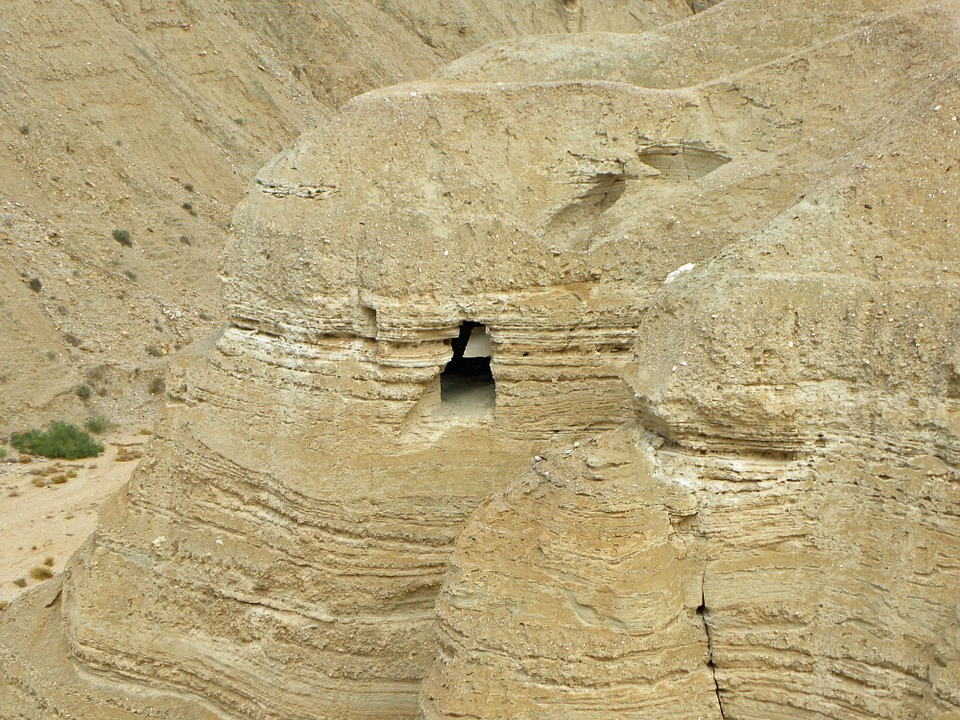Archaeologists have long believed that the famed Dead Sea Scrolls came from the desert following its discovery. However, a new study analyzing the scrolls reveals more information on its possible origins.
Archaeologists from the Israel Antiquities Authority or IAA conducted a DNA analysis on the fragments of the Dead Sea Scrolls that they obtained over time. They found that some of the fragments of the scrolls were written on the skins of cows and sheep. This suggests that the origin of the scrolls was not at the Judean desert where it was previously unearthed and that the scrolls were not written on goatskin as it was widely believed. Because sheep and cows do not live in the desert, this discovery suggests that the scrolls originated elsewhere, but experts have yet to determine where it may be.
Overall, over 25,000 fragments of the scrolls have been discovered in 11 different caves with various archaeological authorities trying to piece together the texts and fragments. As the scrolls are thousands of years old, many parts of the texts were damaged and beyond repair. The authors of the scrolls also remain unknown but archaeologists are keen on piecing every discovered fragment together to see the overall message.
The texts on these Dead Sea Scrolls provide more insight into life during biblical times as well as more information in the early years of Christianity. Back in 2014, during a podcast at the BBC called Beyond Belief: Archaeology and Religion, Professor Stavrakopoulou revealed how some of the text on these scrolls discussed the social issues that were prevalent during that time.
“I think it shows us that the time of Jesus and the Jesus movement that grew up around him was just one of the Jewish sects or cults in which there were all sorts of anxieties about the relationship of the Jewish people and their God to the rest of the world, particularly in relation to the Roman Empire,” said Professor Stavrakopoulou, who noted that there were many interpretations of the end of the world or apocalypse as well as interpretations of a messiah figure.
“Jesus and the movement around him was just one of those manifestations that happened to catch.”



 Cogent Biosciences Soars 120% on Breakthrough Phase 3 Results for Bezuclastinib in GIST Treatment
Cogent Biosciences Soars 120% on Breakthrough Phase 3 Results for Bezuclastinib in GIST Treatment  Eli Lilly’s Inluriyo Gains FDA Approval for Advanced Breast Cancer Treatment
Eli Lilly’s Inluriyo Gains FDA Approval for Advanced Breast Cancer Treatment  Senate Sets December 8 Vote on Trump’s NASA Nominee Jared Isaacman
Senate Sets December 8 Vote on Trump’s NASA Nominee Jared Isaacman  Trump and Merck KGaA Partner to Slash IVF Drug Costs and Expand Fertility Coverage
Trump and Merck KGaA Partner to Slash IVF Drug Costs and Expand Fertility Coverage  Neuralink Expands Brain Implant Trials with 12 Global Patients
Neuralink Expands Brain Implant Trials with 12 Global Patients  Ancient Mars may have had a carbon cycle − a new study suggests the red planet may have once been warmer, wetter and more favorable for life
Ancient Mars may have had a carbon cycle − a new study suggests the red planet may have once been warmer, wetter and more favorable for life  Lost in space: MethaneSat failed just as NZ was to take over mission control – here’s what we need to know now
Lost in space: MethaneSat failed just as NZ was to take over mission control – here’s what we need to know now  NASA Astronauts Wilmore and Williams Recover After Boeing Starliner Delay
NASA Astronauts Wilmore and Williams Recover After Boeing Starliner Delay  Tabletop particle accelerator could transform medicine and materials science
Tabletop particle accelerator could transform medicine and materials science  Neuren Pharmaceuticals Surges on U.S. Patent Win for Rare Disorder Drug
Neuren Pharmaceuticals Surges on U.S. Patent Win for Rare Disorder Drug  SpaceX’s Starship Completes 11th Test Flight, Paving Way for Moon and Mars Missions
SpaceX’s Starship Completes 11th Test Flight, Paving Way for Moon and Mars Missions  Blue Origin’s New Glenn Achieves Breakthrough Success With First NASA Mission
Blue Origin’s New Glenn Achieves Breakthrough Success With First NASA Mission  FDA Lifts REMS Requirement for CAR-T Cell Cancer Therapies
FDA Lifts REMS Requirement for CAR-T Cell Cancer Therapies  Is space worth the cost? Accounting experts say its value can’t be found in spreadsheets
Is space worth the cost? Accounting experts say its value can’t be found in spreadsheets 































